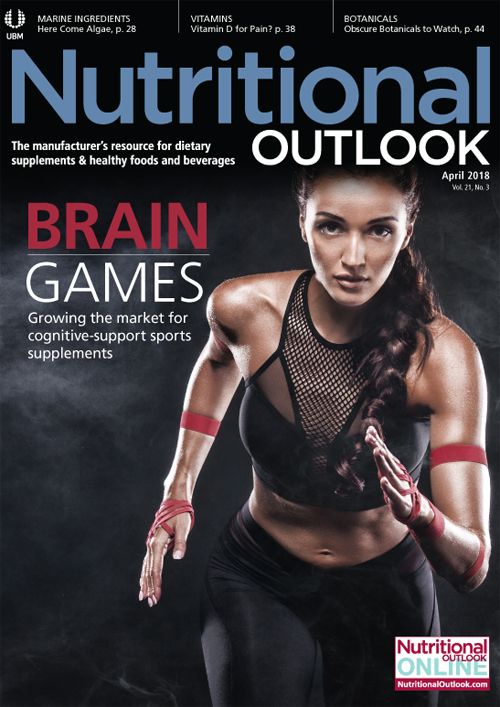New Hidden Stimulants Surface in Sports Dietary Supplements
Research has identified a newly emerging adulterant in sports supplements. NSF's John Travis writes about how he and fellow researchers discovered 2-aminoisoheptane in supplements.
Photo © Shutterstock.com/anyaivanova

Over the course of the many years I’ve spent analyzing dietary supplements, I’ve found potentially harmful ingredients hidden inside many of them. These include DMAA (1,3-dimethylamylamine), DMBA (1,3-dimethylbutylamine), DEPEA (N,alpha-diethylphenylethylamine), and oxilofrine. In new research published in the peer-reviewed journal Clinical Toxicology1 in November 2017, my co-authors and I highlight the presence of a newly emerging adulterant similar in structure to DMAA: 2-aminoisoheptane.
How We Learned about 2-Aminoisoheptane
As researchers following the supplement industry closely, my co-authors and I vigilantly monitor bodybuilding and workout blogs. In 2016, we learned about a new ingredient that had arrived on the scene: 2-aminoisoheptane. None of us were familiar with this compound, and we could find no evidence that 2-aminoisoheptane could be considered a legitimate dietary ingredient. Based on its name, we suspected that this substance was an alkylamine, possibly related to DMAA and DMBA. Also, 2-aminoisoheptane has another interesting connection to DMAA and DMBA: all of these compounds were discussed in studies of pressor amines originally published by Lilly Research Laboratories in the late 1940s.
For our study, we decided to purchase products on the market claiming to contain the botanical ingredient Aconitum kusnezoffii. Unscrupulous marketers will label products as containing this botanical ingredient when really the products contain the synthetic 2-aminoisoheptane. We also searched for products listing 2-aminoisoheptane as an ingredient, as well as other terms used synonymously for 2-aminoisoheptane, including DMHA (dimethylhexylamine), 2-amino-6-methylheptane (an analog of 1,3-DMAA, discussed below), or the drug name octodrine.
We then tested the supplements to determine what those products actually contained. Of the six products we tested, we indeed found one containing 2-aminoisoheptane. We also wondered what else could be in the products. Astonishingly, a little more investigative analysis uncovered the presence of two previously unidentified 1,3-DMAA analogs: 2-amino-6-methylheptane (which is also called octodrine) and 1,4-dimethylamylamine (1,4-DMAA, related to both DMBA and DMAA). Finally, we also detected the two well-known banned stimulants 1,3-DMAA and 1,3-DMBA.
In short, we were surprised to find these four different unlawful stimulants-octodrine and 1,4-DMAA, as well as the better-known 1,3-DMAA and 1,3-DMBA-in six pre-workout and weight-loss products that claimed to contain either 2-aminoisoheptane or Aconitum kusnezoffii. We found DMBA in one product, DMAA in two other products, and 1,4-DMAA in three products. None of the products’ labels disclosed the presence of DMBA, DMAA, or 1,4-DMAA.
Why Do We Keep Finding Hidden Stimulants?
I don’t know how the synthetic stimulants DMAA, DMBA, 1-4 DMAA, and octodrine found their way into these over-the-counter products. It could have been the result of poor manufacturing practices. Perhaps a supplier shipped the wrong ingredient. Or maybe it was intentional. It would not be the first time a synthetic stimulant masqueraded under the guise of being a botanical.
Regardless of how this adulteration happened, the brand owner is ultimately responsible for the quality and safety of finished products. While most supplement brands and manufacturers are committed to ensuring quality and safety, there are some bad actors in the global supplement supply chain. And the actions of these irresponsible and unscrupulous companies are putting consumers at risk.
Our latest research highlights the importance of Good Manufacturing Practices (GMPs), ingredient and finished-product testing, and independent certification of supplements. The fact that news of our research was covered extensively in the consumer media-in publications like SELF and Men’s Health as well as major daily newspapers-means consumers are paying attention to what’s inside the supplements they buy.
Ever since FDA banned ephedrine in 2004, many supplement manufacturers have been searching for new ingredients that could replace it. Today, it seems, many supplement makers remain on the hunt for an ingredient that will provide that same “ephedrine-like” stimulant kick in their products. Over the last few years, I’ve worked closely with researchers at Harvard Medical School, the National Center for Natural Products Research (NCNPR) at the University of Mississippi, and the National Institute for Public Health and the Environment in the Netherlands (RIVM), and we’ve found many examples of untested and potentially harmful compounds in supplement products available worldwide. These hidden stimulants include DEPEA, DMAA, DMBA, and oxilofrine, which have been alleged to be constituents of orchid, geranium, tea, and citrus fruit, respectively, without credible evidence to support those claims.
Detecting Adulterants
In 2016, my research colleagues and I found the unapproved pharmaceutical stimulant oxilofrine in 14 over-the-counter dietary supplement products. Our research was published in the peer-reviewed journal Drug Testing and Analysis. Oxilofrine is easily disguised or unlisted on labels, posing serious health risks to consumers.
FDA took action on April 4, 2016, to remove oxilofrine from the marketplace, issuing warning letters to seven companies that listed the compound on their product labels. According to the FDA, oxilofrine is an illegal dietary ingredient, which means products containing oxilofrine are considered misbranded under the law.
Oxilofrine has been studied in animals and humans and found to cause effects on the heart similar to those cause by ephedrine. According to our research, 26 adverse events have been reported in the Netherlands linked to supplements containing oxilofrine. These supplements led to nausea and vomiting, tachycardia, chest pain, and cardiac arrest. Additionally, oxilofrine is often disguised on labels as “methylsynephrine” or “extract of Acacia rigidula.”
Another example is DMAA. In 2013, I worked with researchers at the U.S. Army Research Institute of Environmental Medicine (USARIEM) and determined that DMAA is not “natural” in origin and should not be used as an ingredient in dietary supplements. The findings support research conducted by academic research laboratories around the world. Several sports supplements have tried to market DMAA as a natural constituent of geranium or its extract, but there is no credible scientific evidence to support that claim. Products containing DMAA have been linked to health problems and at least five deaths. The FDA issued several warning letters to manufacturers who have formulated their products with DMAA and urged consumers to avoid these products. Several professional and Olympic athletes have lost their eligibility to compete due to the presence of DMAA in their system. Stores and online retailers, however, still sell products that contain DMAA, despite the FDA ban.
How We Test for Adulterants
When testing products for banned substances, I usually “target” what adulterant I am searching for, purchase a reference standard for that adulterant, and then test for the adulterant. In targeted analysis, I use ultra-high-performance liquid chromatography (UHPLC) coupled with tandem mass spectrometry to detect and measure compounds. In the case of the Clinical Toxicology study, however, I had to deviate from that process after finding that the adulterant we originally targeted-2-aminoisoheptane-was not in all of the products. At this point, we shifted to an “untargeted” or investigative approach. The Clinical Toxicology investigative analysis was really interesting in that I used a different technique to capture much of the information and then “sifted out” the interesting features. I still used UHPLC, but coupled that with a high-resolution/accurate mass spectrometer (HRAM-MS). This instrumentation is capable of measuring a compound’s mass with a high degree of accuracy and differentiate it from others close in mass. For instance: testosterone has a molecular formula of C19H28O2, which corresponds to an exact mass of 288.2089. Desoxymethyltestosterone has a molecular formula of C20H32O and a corresponding exact mass of 288.2453. A typical quadrupole mass spectrometer would not be able to distinguish between the two. The HRAM-MS is selective enough to be able to distinguish between those two and provide an accurate mass measurement to the third decimal place for each.
I analyzed all of the products in the Clinical Toxicology study using the UHPLC-HRAM-MS instrument and examined their interesting features. First, I identified the features that corresponded to the labeled ingredients. Then I worked on identifying the remaining features, working on those with the most intense to the least intense signals. It was in this way that I uncovered the presence of the unlabeled ingredients. I still had to use the targeted method-UHPLC coupled with tandem mass spectrometry-with a reference standard to confirm the presence and quantity of ingredients. This last step, using a reference standard to characterize ingredients during testing, is very important; unfortunately, some researchers omit this step in published research.
An Opportunity to Set Yourself Apart
While the vast majority of manufacturers are committed to quality and safety, a small number of manufacturers continue to develop and market products that contain potentially harmful ingredients. Some might say this presents a great opportunity for reputable companies that want to showcase their products’ quality and safety to set themselves apart.
Third-party certification of dietary and sports supplements, such as my organization’s NSF International certification program, helps companies differentiate their products. When consumers see the NSF certification mark on a package, they can be sure those vitamins and supplements have been independently tested for harmful levels of specific contaminants like lead and arsenic and that label claims have been verified. My colleagues and I are already working on several new research projects involving hidden stimulants in supplements. We expect to publish our findings this year.
John Travis has more than 20 years of experience as an analytical chemist specializing in the analysis of dietary supplements. As senior research scientist, dietary supplements, at global public health organization NSF International (Ann Arbor, MI), Travis analyzes hundreds of dietary supplement products each year for various contaminants, emerging drugs, and harmful compounds. He is a subject matter expert on athletic banned substances and was instrumental in the development of the screening methods used for the NSF International Certified for Sport program, which now screens products for more than 270 banned substances on the World Anti-Doping Agency, National Football League, Major League Baseball, and National Collegiate Athletic Association lists. Travis is currently involved with the analysis of pharmaceutical agents and illicit drugs, stimulants, and other prohibited substances as both adulterants and contaminants in dietary supplements and functional foods, co-authoring scientific papers on ingredients of concern including stimulants drugs DMAA, DEPEA, and DMBA found in dietary supplements.
Also read:
2017 Sports Nutrition Adulteration Update
Which Are Emerging Adulterants in Sports Supplements?
The Latest Testing Techniques for Catching Dietary Supplement Fraud and Adulteration
References:
- Cohen PA et al., “Four experimental stimulants found in sports and weight loss supplements: 2-amino-6-methylheptane (octodrine), 1,4-dimethylamylamine (1,4-DMAA), 1,3-dimethylamylamine (1,3-DMAA) and 1,3-dimethylbutylamine (1,3-DMBA),” Clinical Toxicology. Published online November 8, 2017.


























2 Commerce Drive
Cranbury, NJ 08512
All rights reserved.

.png&w=3840&q=75)

.png&w=3840&q=75)



.png&w=3840&q=75)



.png&w=3840&q=75)
